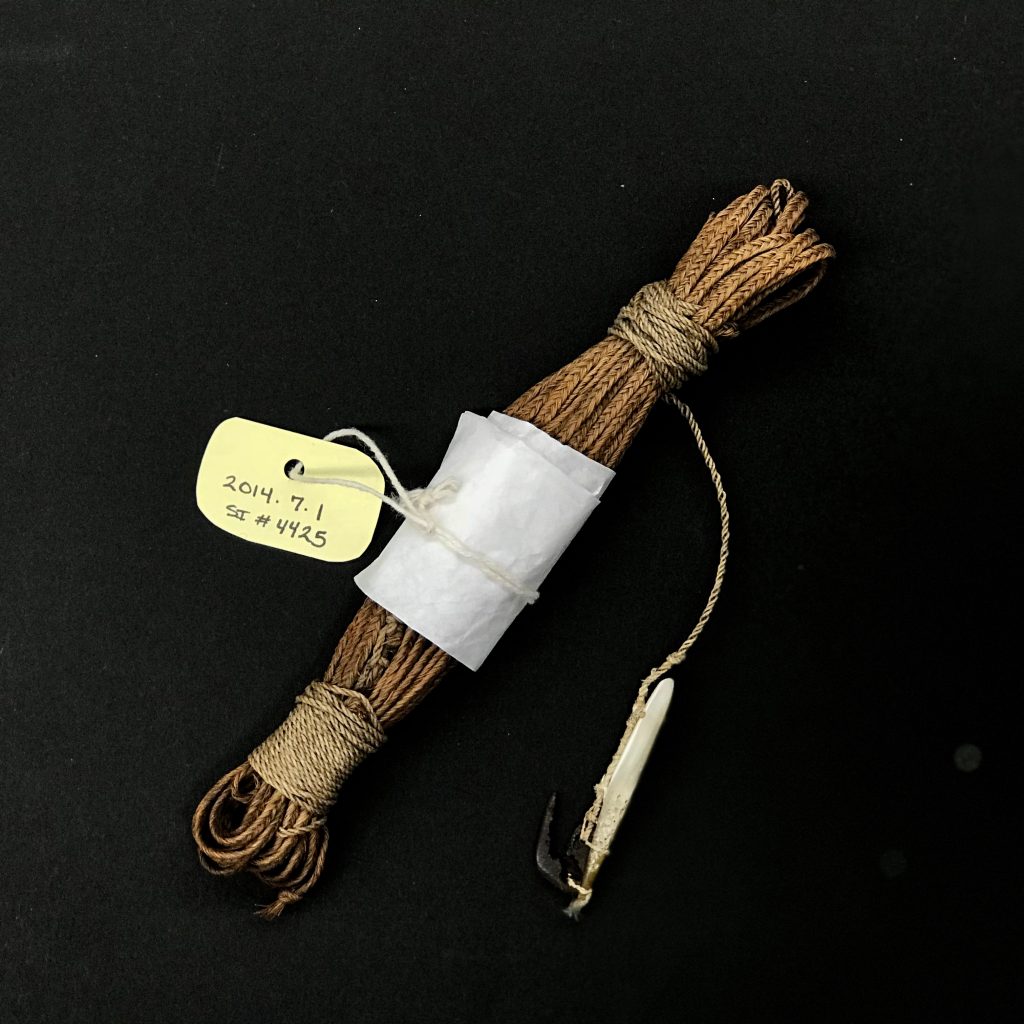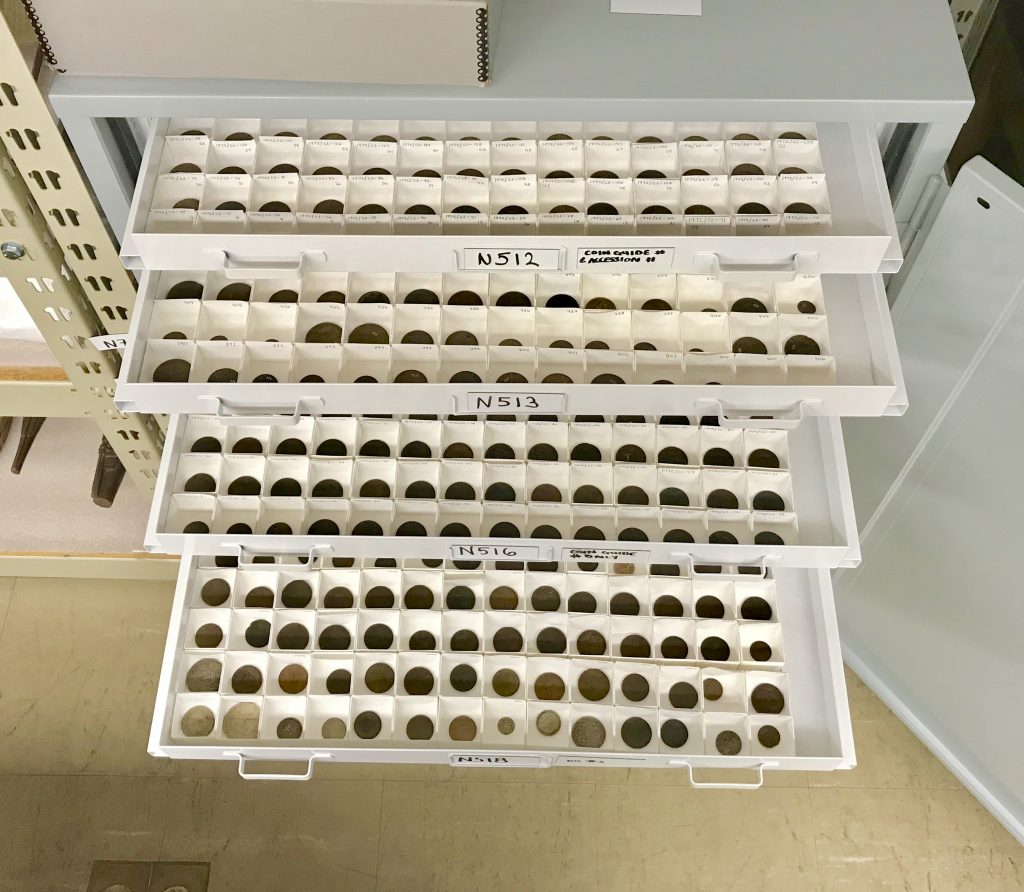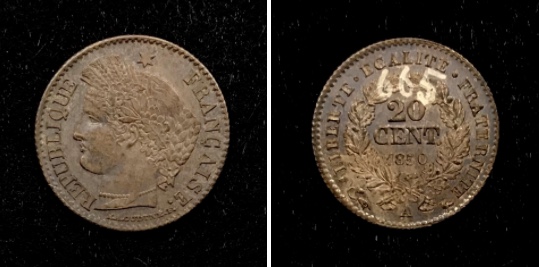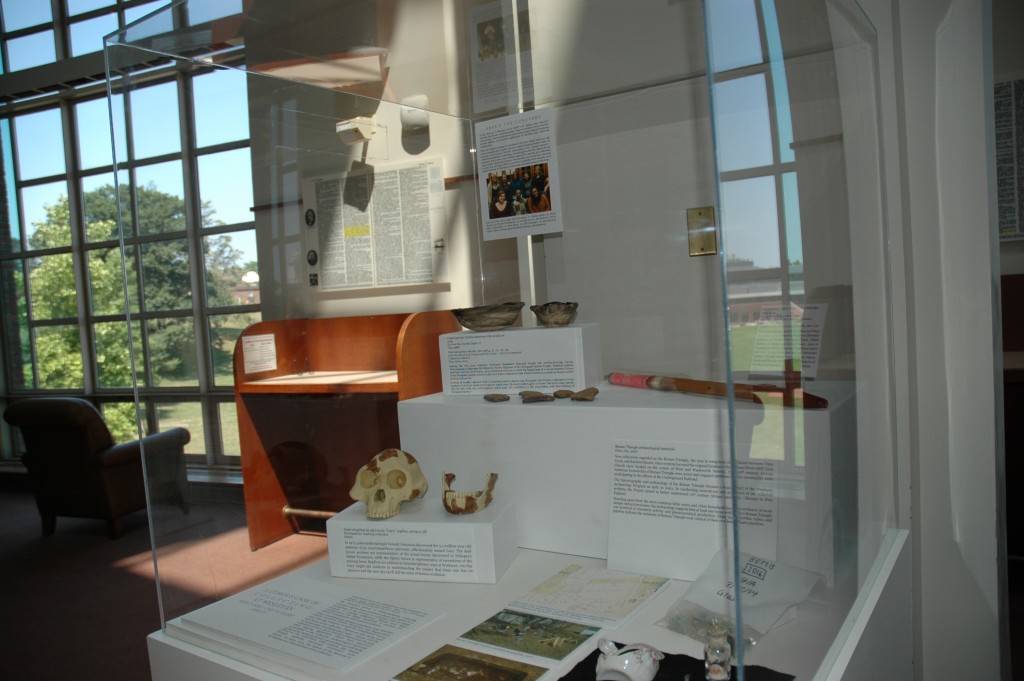
On August 18, 1838, six ships departed from Hampton Roads, Virginia with 346 men, including nine naturalists. This voyage would become known as the United States Exploring Expedition, or in short, the Wilkes Expedition. Led by Charles Wilkes, the voyage was the first U.S. government funded scientific expedition, spanning from 1838 to 1842. Surveying parts of Africa, South America, and the Pacific, the journey amassed nearly 4,000 natural specimens and cultural objects were collected for future study. Some of these objects have become a part of Wesleyan’s Archaeology and Anthropology Collections. This blog post will explore the complicated history of the Wilkes Expedition, contextualizing the acquisition of these objects in order to better engage with them.
The expedition was an endeavor of massive proportions and required significant preparations. It took ten years to win Congressional approval, but when it was finally approved in May 1836, an additional two years were required to adequately prepare for the voyage. It was difficult to recruit sailors, for the long three-year voyage would prevent them from accessing promotional opportunities, and certain ships had to be reconstructed or replaced. The difficulty with the ships meant that the civilian naturalist corps had the be reduced from 21 to 9. The appointment of Charles Wilkes as captain of the expedition was not without controversy either. Wilkes was merely a junior lieutenant, and was appointed as captain over several more experienced candidates.[1]
While we now consider this voyage to be one of the major scientific expeditions of the nineteenth century, its primary motivations were commercialistic and militaristic. In November 1837, it was written that “the primary object of this expedition is the promotion of the great interests of commerce and navigation. The advancement of science is considered an object of great, but comparatively of secondary importance.”[2] The inclusion of two sloops of war and a gun brig, out of six ships in total, reflects an unstated focus on projecting military might. The reduction of the scientific corps also suggests the expedition’s true priorities. The scientists on board lacked sufficient assistants, as well as the space to both research and store specimens.[3]
Scientists were quick to take advantage of their military resources to complete their scientific objectives and studies. For example, the Expedition utilized a ‘‘running survey’’ technique in order to chart the islands visited, which used gunfire to chart an island’s geography. Anthony Adler explains: “by observing the time between the flash and report of gunfire, officers could measure angles between the ships and the shore in order to calculate distances.”[4] While not explicitly utilized for violent ends, Wilkes was firing upon the entire circumference of an island solely for mapping purposes.
In a number of recorded instances, the expedition exerted extreme brutality on the residents of Fiji. After one of their boats was stolen, Wilkes ordered a village’s structures, canoes, and crops burnt. After two crewmen, including Wilkes’ nephew, were killed while surveying the island, Wilkes burnt down one village, and massacred another.[5] For this brutality he was subjected to court martial. But while eleven charges were brought against him, Wilkes he was only found guilty of illegal punishment of seamen.[6] Wilkes also arrested the chief Ro Veidovi, who was responsible for the murder of five crew members on the Charles Daggett, a whaling vessel that had arrived in Fiji in 1833. Ro Veidovi was forcibly transported back to America, likely to be displayed as a curiosity. However, he died before the voyage was completed. His skull was separated from the rest of his body, and displayed in the Patent Office, which later became the National Gallery.[7]
While we may never know the means and methods by which these objects were collected, these acquisition efforts were certainly conducted within these militaristic and violent contexts. Over the four year journey, the expedition amassed nearly 4,000 ethnographic objects. It was traditional on such voyages that individual crewmen would negotiate and trade with the indigenous peoples for curiosities. However, the government prohibited the collecting of curiosities, ruling that all objects amassed would become part of a public collection, which eventually became the foundation of the Smithsonian Collection.[8] A small number of these objects were deaccessioned, and made part of Wesleyan’s Archaeology and Anthropology Collections. They now form part of our Oceanic Collection, an assemblage of approximately fifty artifacts from cultures throughout the Pacific.
Shell Armband

This shell armband is made from the shell of a large sea snail (genus Trochus). This bracelet is created by first placing the lower part of the shell into a fire so that it becomes brittle enough to be chipped with a stone. The bracelet is then polished on the outside using a stone slab and on the inside with a branch of coral. Trochus shells are white with red stripes, and this coloration has evidently been preserved in the creation of this bracelet.[9] The armband is commonly associated with Papua New Guinea, but it is likely to have circulated through Melanesia (Papua New Guinea, Vanuatu, the Solomon Islands, Fiji) via extensive pre-contact trade networks. From our records, we know with good certainty that this object was collected from the Wilkes Expedition in Fiji.
Fish Hook and Line

This fish hook and line is believed to originate from Samoa, another one of the islands explored by the Wilkes Expedition. The hook is made from “mother of pearl” mollusk shell, a popular material for fish hook. It also has a tortoise shell point. The line is made from plaited plant fibers. This type of fish hook and line was used while canoe fishing to troll fish, a process where multiple fishing lines are drawn through the water at once. Both the shell armband and the fish hook were made from biological specimens, which is symbolic of the ecological diversity of the Melanesian area. Due to their geography, fishing was an important component of Melanesian people’s culture, economy, and foodways.
At first glance, these artifacts shed light on indigenous cultures and offer insight into the daily lives of people in the past. However, when analyzing objects it is important to be conscious of the ways in which they were collected. The Wilkes Expedition was plagued with a number of violent instances that both disrupted and actively sought to destroy the lifeways of indigenous people, all under the guise of scientific exploration and commercial enterprise. The history of an object’s acquisition can tell a story of its own.
By Ilana Newman ’18 and Steven Chen ’18
Notes
[1] Patrick Strauss, “Preparing the Wilkes Expedition: A Study in Disorganization” Pacific Historical Review, 28, no. 3 (1959): 224-229
[2] “Preparing the Wilkes Expedition: A Study in Disorganization” 223
[3] Antony Adler, “From the Pacific to the Patent Office: The US Exploring Expedition and the origins of America’s first national museum,” Journal of the History of Collections 23 no. 1 (2011): 54.
[4] Antony Adler, “The Ship as Laboratory: Making Space for Field Science at Sea,” Journal of the History of Biology 47 (2014): 336
[5] Roberta Sprague, “The United States Exploring Expedition to Fiji,” Wansalawara: Soundings in Melanesian History, (1987): 37
[6] Constance Bordwell, “Delay and Wreck of the Peacock: An Episode in the Wilkes Expedition” Oregon Historical Quarterly, 92, no. 2 (1991): 197
[7] Antony Adler, “The Capture and Curation of the Cannibal ‘Vendovi’: Reality and Representation of a Pacific Frontier,” The Journal of Pacific History, 49, no. 3 (2014): 274
[8] “From the Pacific to the Patent Office: The US Exploring Expedition and the origins of America’s first national museum,” 58
[9] “Bracelet: Cook-Forster Collection,” National Museum of Australia, http://www.nma.gov.au/online_features/cook_forster/objects/bracelet_oz397
Works Cited
Adler, Antony. “From the Pacific to the Patent Office: The US Exploring Expedition and the origins of America’s first national museum,” Journal of the History of Collections 23 no. 1 (2011): 49-74.
Adler, Antony. “The Ship as Laboratory: Making Space for Field Science at Sea,” Journal of the History of Biology 47 (2014): 333–362.
Adler, Antony. “The Capture and Curation of the Cannibal ‘Vendovi’: Reality and Representation of a Pacific Frontier,” The Journal of Pacific History, 49, no. 3 (2014): 255–282.
Bordwell, Constance. “Delay and Wreck of the Peacock: An Episode in the Wilkes Expedition” Oregon Historical Quarterly, 92, no. 2 (1991): 119-198.
“Bracelet: Cook-Forster Collection,” National Museum of Australia, http://www.nma.gov.au/online_features/cook_forster/objects/bracelet_oz397.
Isaac, Gwyneira and Barbara Isaac. “Uncovering the demographics of collecting: A case-study of the US Exploring Expedition (1838–1842),” Journal of the History of Collections 28 no. 2 (2016): 209–223.
Sprague, Roberta. “The United States Exploring Expedition to Fiji,” Wansalawara: Soundings in Melanesian History, (1987): 12-49.
Strauss, Patrick, “Preparing the Wilkes Expedition: A Study in Disorganization” Pacific Historical Review, 28, no. 3 (1959): 221-232.











































